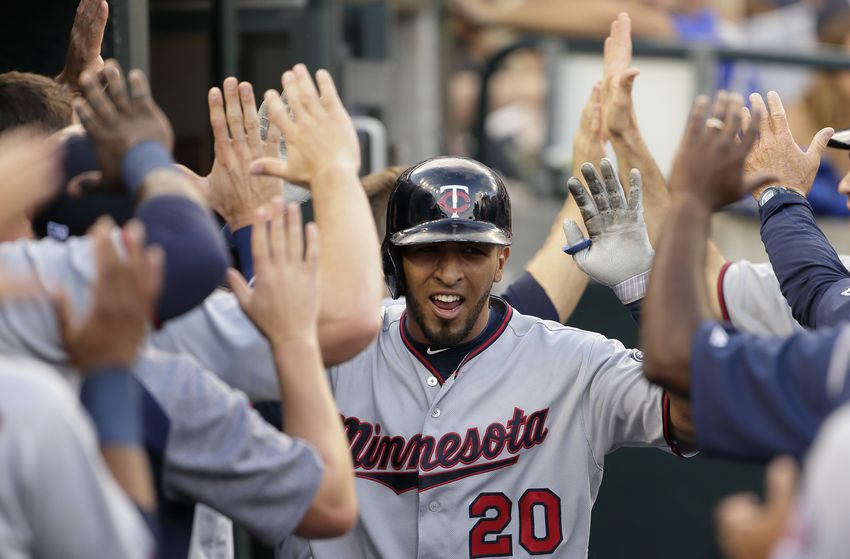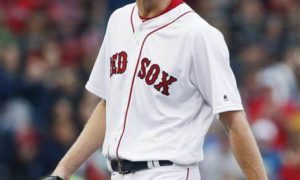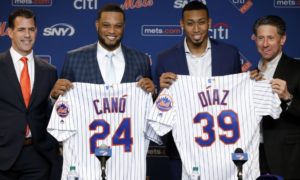Are the Minnesota Twins for Real?

Every year, one or more teams get off to unexpectedly hot starts. This season, we’ve already seen an incredibly tight boom-and-bust cycle occur with the Seattle Mariners. The M’s began the year 13–2, a run that saw them take three of four from the defending World Series champs and tear the cover off the ball on a nightly basis. A month and change later, however, they are below .500 for the season. As of March 16, their sizable run differential advantage has evaporated, leaving them at a -37 mark.
Yet to see their bubble burst, meanwhile, are the Minnesota Twins. As of the same date, they are sitting pretty in the AL Central, 5.5 games up on the Cleveland Indians. They are also second in the American League in run differential at +77. The Twins are bested only by the Houston Astros (+93), which is no real surprise as the class of the AL West.
Are the 2019 Minnesota Twins, predicted by someone right here on this website to be a surprise AL Central contender, for real? Or are they destined for their own Seattle-like swoon? Let’s take a closer look at their year-to-date performance and see whether we can make sense of their early success.
OFFENSE
As far as MLB ranks go, Minnesota rates favorably in terms of run production and average. The Twins are 5th in runs scored, 2rd in batting average, 8th in on-base percentage, and 2nd in slugging. Leading the charge are Jorge Polanco (easily best among qualifying Twins with a .333 BA) and Eddie Rosario (leading the club in home runs and RBI). But this is not to say others in the lineup haven’t contributed. Byron Buxton is significantly outperforming his career .236 average and is the team’s main threat on the bases. Mitch Garver, when in the lineup, has hit over .300 and belted nine homers in 25 games.
The caveat here is that with several young players in the regular lineup (Polanco and Buxton are 25 and Nelson Cruz is the only qualifier over 30), this offensive production could be fool’s gold. Then again, we haven’t really seen the best out of players like Max Kepler. Offseason acquisitions Marwin Gonzalez, C.J. Cron, and Jonathan Schoop have proven capable as members of other squads. Though depth may be an issue in the case of injuries (when isn’t it?), the Minnesota Twins have the offensive talent to be competitive.
PITCHING
Minnesota’s pitching, on the other hand, seems to be a bit shakier. Jose Berrios appears ready to take the next step in becoming the team’s ace, compiling a 6–2 record with a 3.05 ERA and 1.08 WHIP over nine starts. At the same time, Berrios lacks an elite strikeout rate (8.2 K/9), which is alarming considering how his stuff looks to the untrained scout’s eye.
Less heralded but more impressive thus far has been the performance of Jake Odorizzi. The obvious counterargument here is that Odorizzi, since posting two solid seasons with Tampa Bay in 2015 and 2016, has been mediocre. Time will tell if he can outperform his career 3.88 ERA and 1.23 WHIP, but he’s currently rocking a 2.63 ERA and 1.06 WHIP. In addition, despite a high walk rate, Martin Perez has enjoyed a 3.11 ERA to this point. Eventually, we would expect each of these guys to regress a bit.
The other members of the starting rotation have been less fortunate. Kyle Gibson (4.26 ERA, 1.22 WHIP) hasn’t done much yet to suggest he’s worth more than the one-year deal he signed to avoid arbitration. Michael Pineda (5.55 ERA, 1.34 WHIP), coming off Tommy John surgery, has struggled out of the gate and is top-10 in home runs allowed. Between them, they have only registered six quality starts in 18 games started. That’s not a recipe for long-term success and it puts more pressure on the Twins’ bullpen.
Speaking of the bullpen, the Twins have thrived in large part due to their bullpen’s performance. In 68 innings pitched, the quartet of Blake Parker, Ryne Harper, Taylor Rogers, and Trevor May has combined to cede a mere 13 earned runs. That’s impressive, but as with the starters, the strikeout rate is not particularly high. Of that group, only Rogers possesses a K/9 rate of 9.0 or better, a rate all but negated by a 1.36 WHIP. It gives one the sense the Twins ‘pen hasn’t truly been tested.
Yes, the Minnesota Twins are top-five in quality starts and top-10 in ERA and WHIP. But their middling .247 batting average against points to a potential trouble spot. For a staff lacking in high-end options at both ends of the spectrum, average throughout may be enough to get them through the long summer.
THE SCHEDULE
Perhaps the schedule is the biggest reason why the Minnesota Twins have done well over the first 40+ games of the season. Minnesota started the year with a series win over Cleveland and they’ve held their own against Houston. Other than that, however, they’ve benefited from an easy schedule. Two series with Baltimore. Two with Toronto. Two with Detroit. In the case of the Tigers, they’re division rivals and you can’t blame the Twins for their opponent’s struggles. When facing contenders like the New York Yankees and Philadelphia, meanwhile, they’ve lost both series. And they’ve still yet to face Boston or Tampa Bay.
These series (which are coming, mind you) should serve as a more accurate test of the Twins’ ability and resolve under first-year manager Rocco Baldelli. In theory, contests with Cleveland, their closest competitor, whom they will play 13 more times in the second half of the season, should also serve as a barometer of the Twins’ contender status. In an American League somewhat surprisingly devoid of parity, though, that may not be quite the achievement it appears.
THE FINAL VERDICT
Let’s be clear: the Minnesota Twins are a good team. Based on their year-to-date performance thus far, FanGraphs projects the Twins to win 90 games this season, putting them in line to win the division. Besides, in what looks to be a two-horse race in the AL Central, Cleveland has plenty to worry about. The Indians are bottom-five in runs scored, batting average, and slugging. On the pitching side, Corey Kluber is set to miss an extended period with a broken forearm and Mike Clevinger hasn’t pitched in a game since April 7. The Indians are still relevant because of the statistical excellence of starter Trevor Bauer and closer Brad Hand. If not for the likes of them, the Tribe could be further behind in the division race.
At this point, however, it’s still a stretch to call the Twins a contender next to the firepower of perennial playoff threats like Boston, Houston, and the NY Yankees or even the pitching dominance of the Tampa Bay Rays. As the season wears on, one would expect Jake Odorizzi and Martin Perez to regress and the bullpen to go through its rough patches. Plus, there are always injuries. The recent addition of Mitch Garver to the injured list may not be a backbreaker, but other losses could hurt Minnesota as the schedule ramps up after the All-Star break. The Minnesota Twins should be proud of what they’ve achieved over the first quarter of the season. But they’ve still got a lot more to go in 2019 and stiffer competition to face, even in what appears to be a down year for the American League.
-Joe Mangano


















